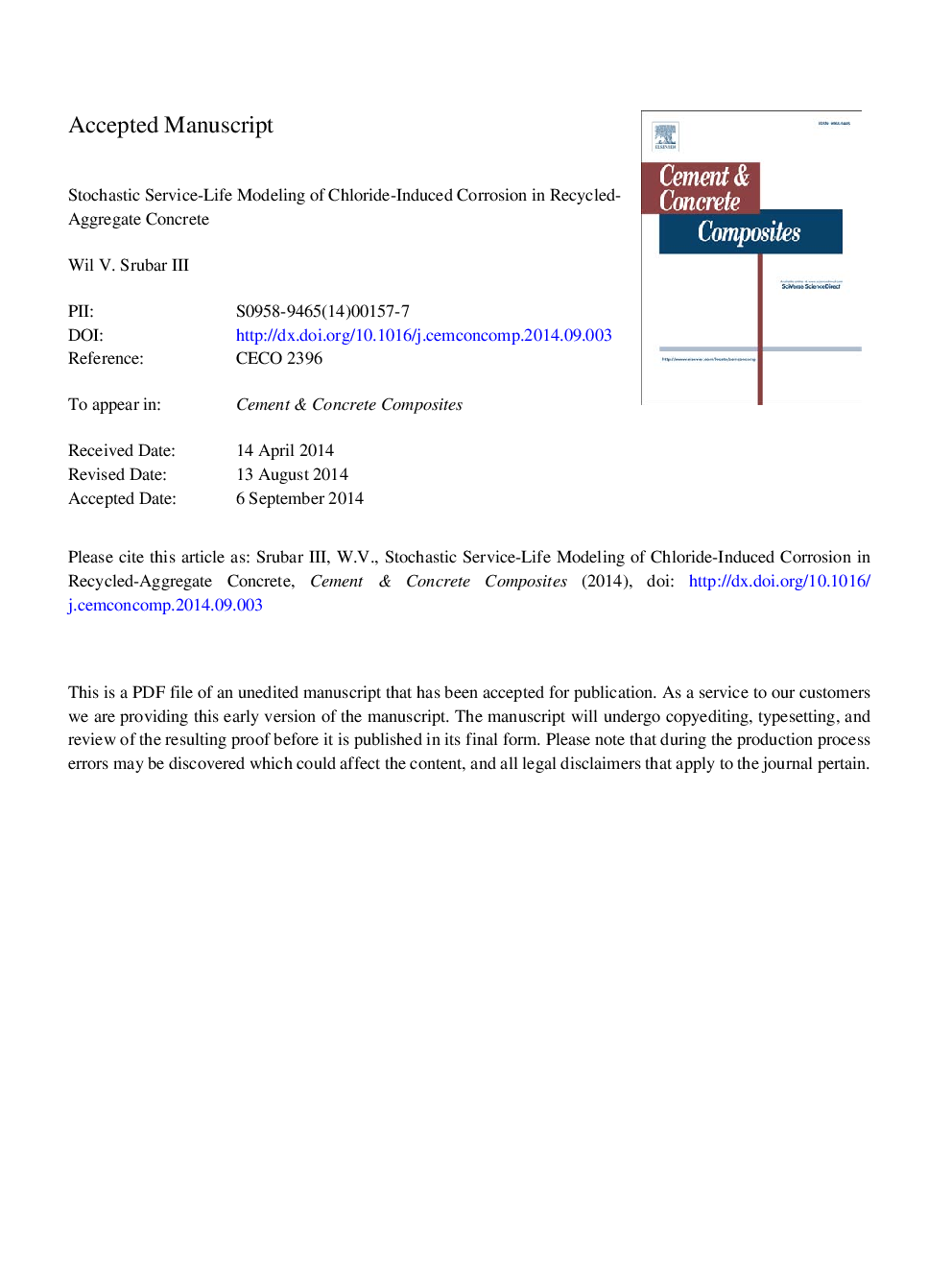| Article ID | Journal | Published Year | Pages | File Type |
|---|---|---|---|---|
| 7884180 | Cement and Concrete Composites | 2015 | 32 Pages |
Abstract
The development and implementation of a stochastic service-life model for chloride-induced corrosion in reinforced recycled-aggregate concrete is presented in this work. The 1D model accounts for recycled aggregates that have been initially contaminated with chlorides from previous in-service exposure. Using a probabilistic approach, the model is employed to predict the service life of normal- and recycled-aggregate reinforced concrete with and without aggregate pre-contamination. Specifically, the effect of (a) type and replacement ratio of reclaimed aggregate, (b) chloride boundary conditions, (c) initial aggregate chloride concentration, and (d) thickness of contaminated aggregate shells on time to corrosion cracking was investigated herein. Results suggest that certain levels of contamination may be permissible in the design of reclaimed-aggregate reinforced concrete structures. Furthermore, quality control standards that limit thresholds of recycled aggregate replacement ratios and aggregate purity should be based on anticipated exposure conditions and old mortar thicknesses rather than initial degrees of aggregate contamination.
Related Topics
Physical Sciences and Engineering
Engineering
Industrial and Manufacturing Engineering
Authors
Wil V. III,
